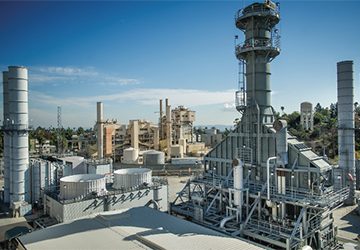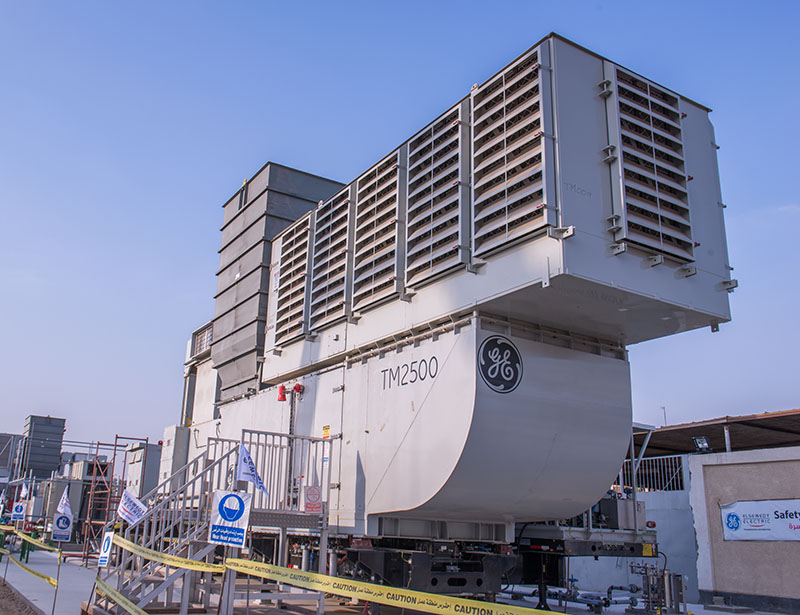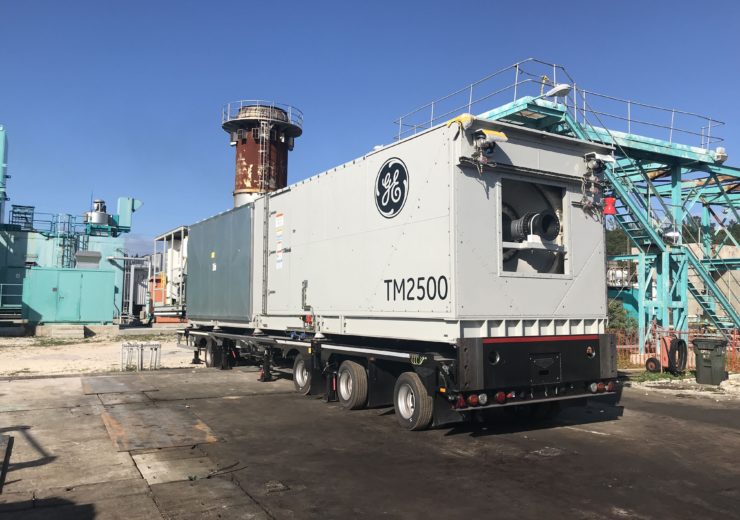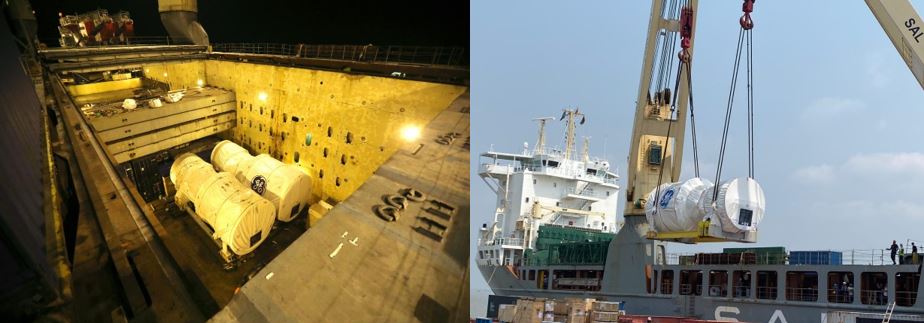India’s energy landscape
Supporting future power capacity needs, today
With a population of more than 1.3 billion people, India is one of the world’s fastest-growing economies. The government has set an ambitious goal of securing 500 GW of clean, affordable, sustainable power for its citizens. India has made great strides—having already built 87 GW of additional renewable power capability*, and recently announcing the country’s Green Hydrogen Policy, which aims to produce 5 million metric tonnes per year of green hydrogen by 2030. With more experience running gas turbines on hydrogen than any other OEM, GE is well prepared to help India achieve its hydrogen and sustainable energy goals.
Grid firming
Bridging India’s renewable energy gap
Grid firming or grid balancing (also known as capacity firming or renewable firming) is the addition of another energy resource to a renewable power plant to provide secure, stable power any time the sun isn’t shining or the wind isn’t blowing. Grid firming is vital for any power generation network, especially one like India’s, with a high percentage of renewable power sources.

The "duck curve"
These charts represent a typical day in India. The duck curves show the impact of higher renewable penetration on net load demand. When more solar production is available on the grid during the day, the “belly” of the duck curve gets deeper. When the sun goes down, however, flexible resources like aeroderivative gas turbines are necessary to compensate for the sudden drop in solar power and effectively manage the grid. As renewable sources start to grow on the grid, the curve steepens to show how ramp rates become essential to maintain stability.
Available and competitive grid firming options
Gas power is a suitable solution for India
Any region generating renewable power needs a continuously available energy solution to support it. There are many technologies capable of supporting grid firming, including —but not limited to—gas-fired power plants, coal-fired power plants and energy storage. However, one fuel source offers a solution for India that’s cleaner, more efficient and flexible: Natural gas. Learn more about why gas power is the right solution for India's energy future in the on-demand webinar and white paper below.
Hydrogen-ready gas turbines
Supporting India’s decarbonization journey
GE knows that the power sector serves as a model for other industries around the world. We believe that lower-carbon solutions, such as renewable energy supported by gas power, can contribute to a more decarbonized energy future. GE offers the industry’s most experienced gas turbine fleet in hydrogen and similar low-BTU fuel operations, with more than eight million operating hours in decades of use across more than 100 gas turbines.
Webinars
White papers
Why gas power for India?
Gas plays a vital role in meeting India’s renewable energy goals
Gas-based thermal power has inherent flexible characteristics that makes it ideal for grid firming. Gas power can also achieve single-digit NOx emissions, 50% lower CO2 emissions as compared to coal, and doesn’t produce any ash or sulphur. With India’s mature gas pipeline, it can be deployed just about anywhere in the country to provide quick, efficient power to help support India’s growing energy needs. Browse below to learn more about the benefits of GE's gas turbines for India.
Fast start
The shorter the start-up time, the quicker a turbine can achieve minimum load and support additional power needs. Gas units take the least time required for start-up and consume less energy per MW, making them well suited for supporting the variable nature of renewable power. In fact, some gas turbines can reach full plant load in less than 15 minutes. This flexibility allows grid operators to quickly dispatch gas power when needed and shut down or schedule for minimum load when renewable power is abundant.
High ramp rate
Higher ramp rates allow the plant operator to adjust net power more rapidly to meet changing demand caused by the variability of solar and wind power. Gas turbines ramp the fastest of all energy generation solutions—up to 88 MW in a minute.
Operational flexibility
High part load efficiency, a low minimum load, and deeper turndown all contribute to the flexibility of aeroderivative (aero) gas turbines. Aeros are also hydrogen-capable and can operate on a wide variety of fuels, like natural gas, diesel, and aviation fuel—but can also be configured to operate on fuels such as naphtha, LPG, ethane, ethanol, bio-diesel, and more.
Quick install time
Get up and running with power when you need it. GE’s trailer-mounted TM2500 can be installed in less than three months, and our other aero gas turbines can be up and running in six months, helping you get the dispatchable power you need.
Part load efficiency
GE’s gas turbines can provide very high part-load efficiencies compared to other thermal assets, which result in significant economic benefits when turning down the load.
Case studies
GE’s gas turbines for grid firming
Our turbines are used for stabilizing grids all over the planet while renewables are being mass integrated. See how our customers are benefitting from the technology.
-
TM2500 and Channel Island Power Station: supporting hydrogen
-
The LM2500 and Cove Power Station help stabilize Tobago’s grid
-
Stabilizing France’s grid
-
Keeping Australia powered
-
Bridging the hydro gap
-
Powering an island
-
Stabilizing wind power
-
Adding capacity to the Bangladesh grid
-
TM2500 and Channel Island Power Station: supporting hydrogen
-
The LM2500 and Cove Power Station help stabilize Tobago’s grid
-
Stabilizing France’s grid
-
Keeping Australia powered
-
Bridging the hydro gap
-
Powering an island
-
Stabilizing wind power
-
Adding capacity to the Bangladesh grid
TM2500 and Channel Island Power Station: supporting hydrogen
Territory Generation selected GE’s TM2500 mobile aeroderivative gas turbine, using its Channel Island Power Station to support grid firming in the Darwin-Katherine region and support hydrogen endeavors.
50%
renewables by 2030
Net-zero
carbon by 2050

"Territory Generation sought technology to modernize our current fleet that struggles to meet changing grid demands and low power system loads. We plan for the TM2500 to be the first of multiple units to be deployed over the next five years as existing units near their end of life. At this stage, the TM2500 generator’s operational flexibility makes it the best fit to firm up the growing renewables base in the Northern Territory."
Gerhard Laubscher
Territory Generation CEO
The LM2500 and Cove Power Station help stabilize Tobago’s grid
GE has inaugurated the first gas turbine for the island nation of Tobago, providing flexible and sustainable electricity to the country’s grid. Cove Power Plant provides the electricity equivalent of more than 28,000 households using the most reliable gas turbine in its class—the LM2500.
1st
Gas turbine on the island
20 MW/28,000
households worth of power distributed to the grid

"The island of Tobago is poised for productive growth, and to fuel that growth it made sense to tender for an additional generator. Our GE LM2500 aeroderivative, with its small footprint and high level of reliability was chosen, and we look forward to its performance for years to come."
Courtenay Mark
Chief Technical Officer of the Trinidad and Tobago Electricity Commission
Stabilizing France’s grid
EDF Bouchain: France

Sourcing nuclear power for most if its energy, France called for grid stabilization when integrating renewables.
The EDF Bouchain plant installed the first commercial 9HA heavy duty gas turbine, performing with a world-record 62.22% net combined-cycle efficiency and 99.8% reliability.
Keeping Australia powered
Infigen: South Australia

Infigen knew they could rely on four 30-MW TM2500 turbines from GE—due to the their fast-start capability, dual-fuel flexibility, portability, and low maintenance costs.
The units will complement Infigen’s renewable energy portfolio while contributing to grid stability in South Australia.
Bridging the hydro gap
Exelon: Texas, USA

With condensers needing just 10% of the water required for large installation cooling, four GE 7HA gas turbines help Exelon save millions of gallons of water a day in drought-prone Texas. Now, Exelon’s Wolf Hollow and Colorado Bend 1,000 MW combined-cycle projects are markedly more efficient.
Powering an island
Nassau, Bahamas

Bahamas Power & Light Company Ltd. installed a GE TM2500 mobile aeroderivative gas turbine in its Blue Hills Plant.
The added 34 MW supports the power consumption of up to 18,000 island customers, and is also helping with grid frequency control and reducing risky outages caused by hurricanes.
Stabilizing wind power
Sentinel Energy: California, USA

Southern California has become a hotbed for renewables.
To offset the intermittency of Coachella Valley’s 700+ MW of wind power, Competitive Power Venture constructed the world’s largest facility—an impressive 800 MW—using eight rapid-start, intercooled LMS100 aeroderivative gas turbines from GE.
Adding capacity to the Bangladesh grid
Shahjibazar Power Plant, Bangladesh

Bangladesh is rapidly transforming, and is fast tracking projects to add capacity to its grid. The 100 MW simple cycle natural gas-fired plant in Shahjibazar has acquired GE’s highly efficient LMS100 aeroderivative turbines for the job of improving grid stability in a fluctuating grid environment.
Our local presence
Positioned to support gas in the region
GE has had a strong local presence in South Asia for more than 110 years. In the region, we currently have more than 18,000 employees across Aviation, Power, Healthcare, Renewable Energy, and Digital, with an installed fleet of more than 300 utility and industrial gas turbines.
There are 15 GE manufacturing sites in India, including a multi-modal manufacturing facility in Pune. GE also has five Technology centers—including the John F. Welch Technology Center (JFWTC) in Bengaluru, the largest integrated multidisciplinary research and development center outside the U.S. More than 650 Gas Power engineering experts are dedicated to conducting research studies on key power industry domains like combustion, aero-thermal, emission, controls, component testing, GT/ST accessories, rotor dynamics and vibration, monitoring and diagnostics, plant engineering, and electrical systems. GE’s gas power engineers have developed more than 1,200 patents in the last 20 years.
18,000
employees in South Asia
110+ years
strong local presence
15
manufacturing sites
300+
installed gas turbines
5
technology and engineering centers
1,200+
patents developed by GE Gas Power engineers
Contact us
Want to explore how gas can support grid firming in India?
*June 2020: https://cea.nic.in/monthlyinstalledcapacity

